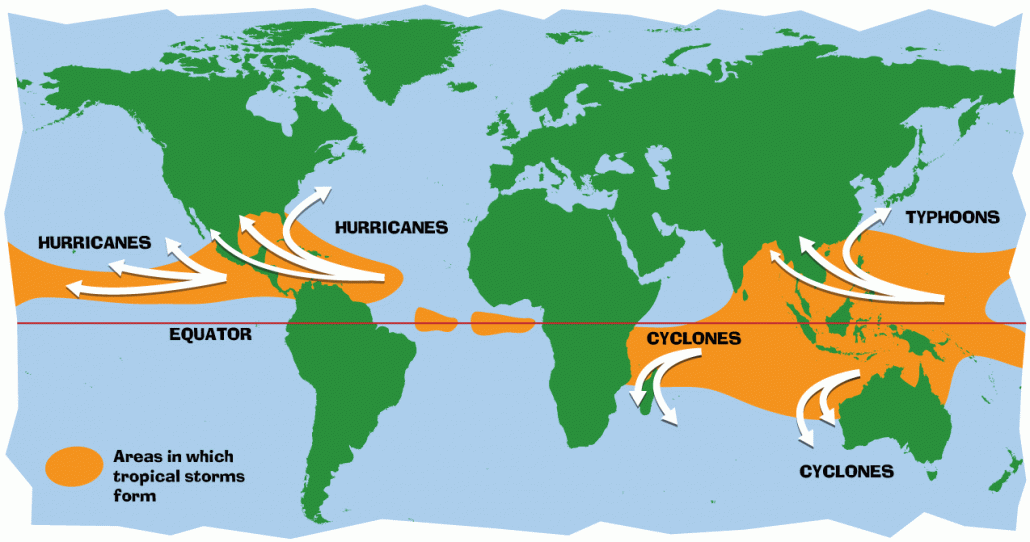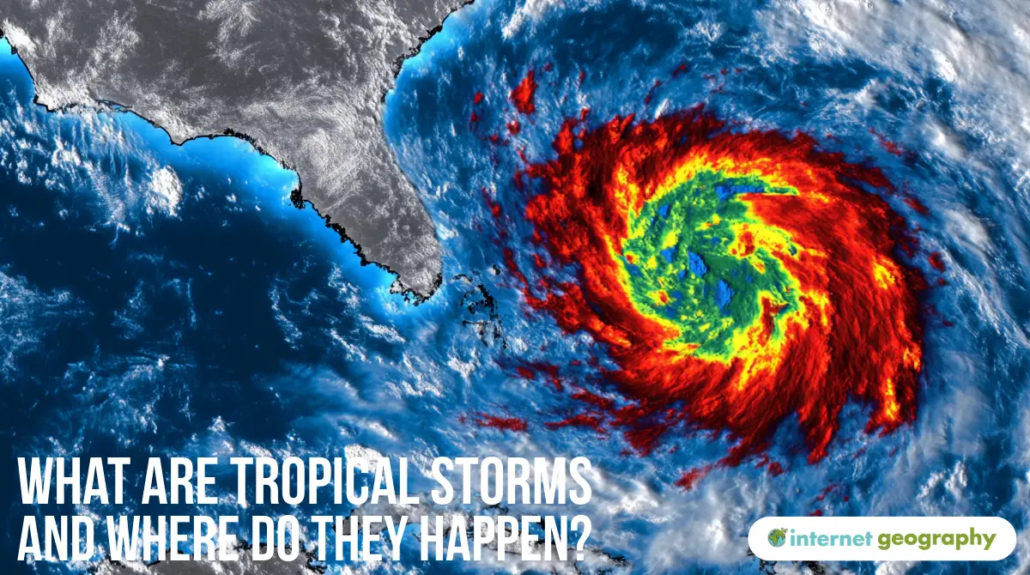What are tropical storms?
A tropical storm is a powerful low-pressure weather system that forms in tropical regions. Tropical storms are characterised by strong winds and heavy rainfall, which can be disruptive and dangerous.
Tropical Storms are areas of extremely low pressure. Air rises rapidly, causing ‘low pressure’ on the Earth’s surface. The maximum sustained surface wind speed (using the U.S. 1-minute average) ranges from 34 knots (39 mph or 63 kph) to 63 knots (73 mph or 118 kph).
Where do tropical storms happen?
Tropical storms typically develop over warm ocean waters, usually at least 26.5°C (80°F), where there is enough moisture and heat to fuel the storm. They often form between about 5° and 30° latitude.
They have different names depending on their location. They are known as Hurricanes in the Atlantic and Eastern Pacific, Tropical Cyclones in Southeast Asia and Eastern Africa, Willy Willies in Australia and Typhoons in the Western Pacific. They occur between 5 and 30 degrees north and south of the Equator.

Tropical storms
How are tropical storms classified?
Hurricanes are classified into five categories based on wind speed, central pressure, and damage potential. The video below demonstrates the five categories.
Saffir-Simpson Hurricane Scale
| Scale Number (Category) |
Sustained Winds (MPH) |
Damage | Storm Surge |
|---|---|---|---|
| 1 | 74-95 | Minimal: Unanchored mobile homes, vegetation and signs. |
4-5 feet |
| 2 | 96-110 | Moderate: All mobile homes, roofs, small crafts, flooding. |
6-8 feet |
| 3 | 111-130 | Extensive: Small buildings, low-lying roads cut off. |
9-12 feet |
| 4 | 131-155 | Extreme: Roofs destroyed, trees down, roads cut off, mobile homes destroyed. Beach homes flooded. | 13-18 feet |
| 5 | More than 155 | Catastrophic: Most buildings destroyed. Vegetation destroyed. Major roads are cut off. Homes flooded. |
Greater than 18 feet |
How are Tropical Storms named?
All tropical storms are named so they can be identified and tracked as they move over oceans. In 1979, both women’s and men’s names were used. One name is selected for each letter of the alphabet, except for Q, U, and Z. For Atlantic Ocean hurricanes, the names may be in French, Spanish, or English, as these are the primary languages of countries bordering the Atlantic Ocean where the storm occurs.
The World Meteorological Organisation uses six lists in rotation. If the tropical storm is particularly deadly or costly, the name is retired, and a new one is chosen.
The Four-Year List of Hurricane Names For Atlantic Storms:
|
2022 |
2023 |
2024 |
2025 |
Further information on these names and tropical storms in other parts of the world can be found on the National Hurricane Centre website.
Find out how tropical storms form.
Summary
Flashcards
Coming soon

